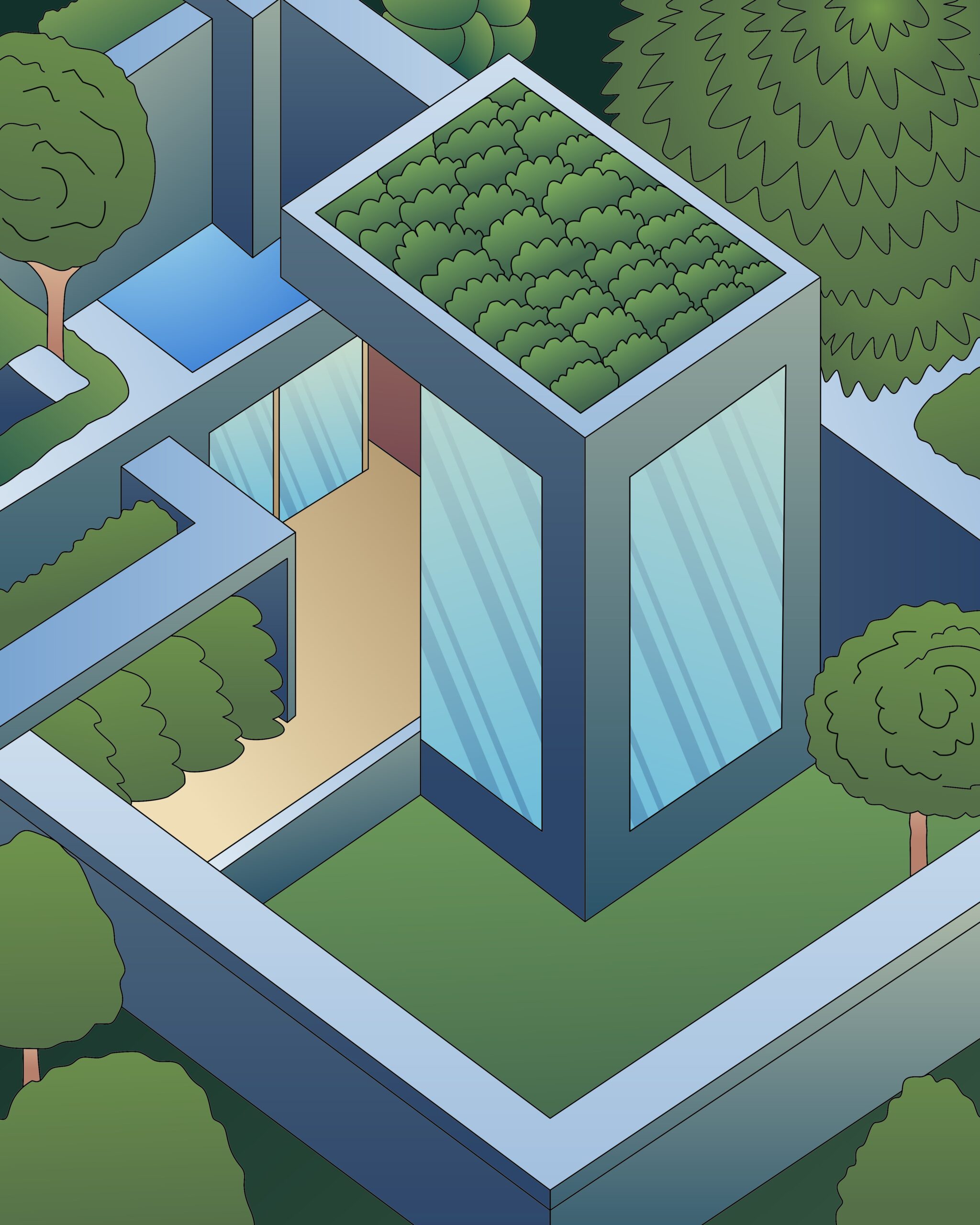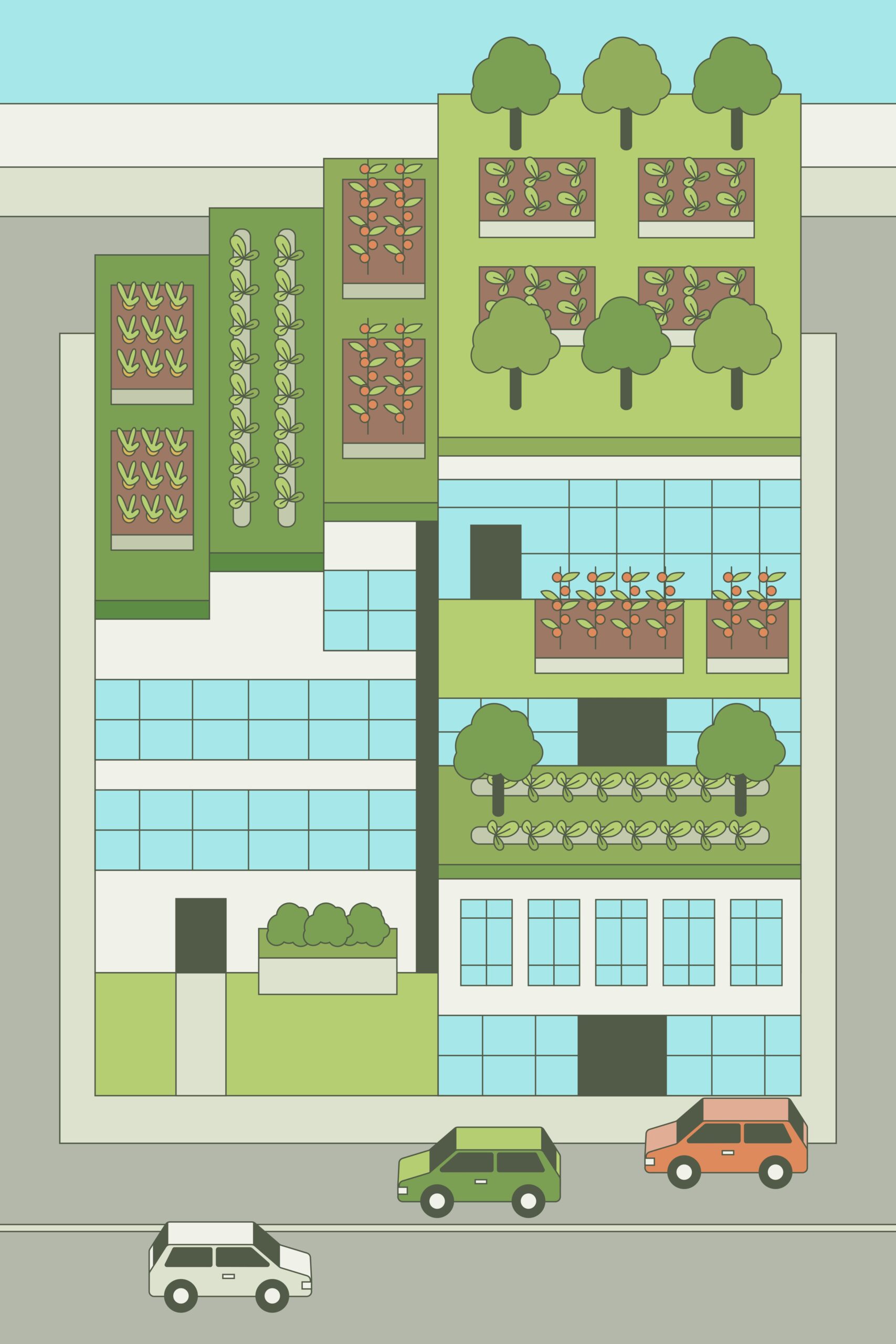It sounds like you’re doing your best to stay consistent with your fitness goals, which is great! Life can be unpredictable, and it’s normal for plans to shift. Going to the gym once is still a positive step, and you can always aim to adjust and build back up to twice a week when it suits you better.
Archives: Mind And Body
What should I do if I am too lazy to go to muscle training?
-
I still have muscle pain, can I still do muscle training?

Yes, you can still do muscle training even if you have muscle pain, but there are a few considerations to keep in mind to prevent injury and promote recovery:
1. Type of Pain:
- Delayed Onset Muscle Soreness (DOMS): If the pain is a result of delayed onset muscle soreness, which usually occurs 24-48 hours after exercise, light to moderate exercise can actually help reduce soreness by increasing blood flow to the muscles.
- Injury or Sharp Pain: If the pain is sharp, stabbing, or persists for an extended period, it could indicate an injury. In this case, it’s best to avoid training the affected muscles until they have healed, as continuing to train could worsen the injury.
2. Modify Your Workout:
- Lower Intensity: Perform lower-intensity exercises or use lighter weights to avoid putting too much strain on sore muscles. Focus on a lower volume and lower intensity compared to your usual routine.
- Active Recovery: Include activities like walking, cycling, swimming, or yoga. These promote blood flow and reduce muscle stiffness without adding extra stress to the muscles.
- Train Different Muscle Groups: If your legs are sore, focus on upper body exercises, and vice versa. This allows the sore muscles to rest while you continue to train other parts of your body.
3. Listen to Your Body:
- Pay close attention to how your body responds during training. If the soreness significantly worsens or you feel pain beyond what seems normal for DOMS, it might be a sign to rest and allow more recovery time.
4. Rest and Recovery:
- Ensure you’re incorporating rest days and recovery strategies like stretching, hydration, proper nutrition, and sleep to support muscle repair and reduce soreness over time.
In summary, light training or working different muscle groups is usually fine if you’re experiencing normal muscle soreness. However, avoid high-intensity training of the sore muscles if the pain is severe or you suspect an injury.
-
Points for Adjusting Training Load in Strength Training

To maximize the effectiveness of strength training, it is essential to set the load appropriately based on your goals and fitness level. Below are key points for adjusting training load:
- Set Load Based on Goals:
- Strength Gain: Use 80–90% of your one-repetition maximum (1RM), performing 1–4 repetitions per set.
- Muscle Hypertrophy: Use 70–80% of 1RM, performing 8–12 repetitions per set.
- Muscular Endurance: Use 50–60% of 1RM, performing more than 15 repetitions per set.
- Maintain Proper Form:
- Correct form is crucial to target the intended muscles and prevent injuries. If your form deteriorates due to excessive weight, reduce the load accordingly.
- Review Load Regularly:
- Reassess your training load every 6–8 weeks. Gradually increase the weight if the exercises become too easy, or adjust down if the load is too heavy.
- Sets and Rest Intervals:
- For muscle hypertrophy, aim for 3–5 sets with 1–3 minutes of rest between sets.
- For strength gain, longer rest intervals of 3+ minutes can be beneficial.
- Incorporate Slow Training:
- Slow training with lighter loads (50–60% of maximum weight) can effectively stimulate muscles by emphasizing controlled movements.
Conclusion
Appropriate load settings vary depending on your goals and fitness level. By maintaining proper form, regularly reviewing your progress, and adjusting your training intensity accordingly, you can achieve safe and effective results in strength training.
-
Why does muscle soreness come on late?

Delayed onset muscle soreness (DOMS) typically peaks 24 to 72 hours after exercise, and several factors contribute to this delay:
- Microtears in Muscle Fibers: Intense physical activity, especially eccentric exercises (lengthening of muscles while under tension), causes small-scale damage or microtears to muscle fibers. These microtears initiate a repair process that strengthens the muscle. However, the tearing itself is not immediately painful. The soreness comes later as the body responds to the damage.
- Inflammatory Response: After the microtears occur, the body’s immune system sends white blood cells and other inflammatory agents to repair the damaged muscle fibers. This process, which peaks several hours to days after the exercise, leads to the release of substances like prostaglandins and histamines that make nerve endings more sensitive and contribute to the sensation of pain.
- Accumulation of Byproducts: During the repair process, metabolic byproducts such as lactic acid are generated. While lactic acid itself isn’t the cause of DOMS, the metabolites involved in the breakdown of damaged muscle tissues can cause irritation and contribute to soreness.
- Swelling and Increased Pressure: In response to muscle damage, fluid may accumulate in the affected area, causing swelling. This extra pressure can stimulate pain receptors in the muscles, leading to soreness. The delay in soreness can be attributed to the time it takes for the inflammation and swelling to develop fully.
- Nerve Sensitization: Following muscle damage, the repair process also increases the sensitivity of the nerves around the affected muscles. This heightened sensitivity takes time to develop, contributing to the delayed nature of the pain.
In essence, the delay in muscle soreness is due to the time it takes for the body to initiate an inflammatory response, repair muscle tissue, and for the associated byproducts to accumulate and exert pressure on nerve endings.
-
I want to surpass that person in muscle training. What should I do?

To surpass someone in muscle training, a combination of strategy, consistency, and smart training is key. Here’s a comprehensive guide to help you get on the right track:
1. Set Clear and Specific Goals
- Define what surpassing means: Do you want to lift heavier weights, build more muscle mass, or improve endurance? Set measurable goals like “bench press 20% more” or “gain 5 kg of muscle.”
- Track progress: Record weights lifted, reps, body measurements, and progress photos to monitor improvements over time.
2. Optimize Your Training Plan
- Follow a structured program: A well-designed program with progressive overload is crucial. Programs like Push/Pull/Legs, Upper/Lower Splits, or Full-Body Workouts can be effective, depending on your training frequency.
- Progressive overload: Gradually increase the weights, reps, or intensity in your workouts. This progressive challenge forces your muscles to adapt and grow.
- Compound exercises: Focus on big lifts like squats, deadlifts, bench presses, and pull-ups, as they recruit multiple muscle groups and promote overall strength and hypertrophy.
- Isolation exercises: Incorporate exercises that target specific muscles to ensure balanced development and address weaknesses.
3. Prioritize Recovery
- Get enough sleep: Aim for 7-9 hours of quality sleep per night, as muscle recovery and growth occur during sleep.
- Rest days: Include rest or active recovery days in your routine. Overtraining can lead to injury and setbacks.
- Stretching and mobility: Improve flexibility and reduce injury risk through regular stretching or yoga.
4. Optimize Your Nutrition
- High-protein diet: Consume 1.6.2 grams of protein per kilogram of body weight daily to support muscle repair and growth. Include lean meats, fish, eggs, dairy, tofu, legumes, and protein supplements.
- Caloric surplus: If building muscle is your goal, ensure you are in a slight caloric surplus to provide your body with the extra energy needed for growth.
- Balanced macronutrients: Include healthy fats and complex carbohydrates to fuel your workouts and recovery.
5. Focus on Form and Technique
- Learn proper form: Proper technique maximizes muscle activation and reduces the risk of injury. Use mirrors, film your lifts, or consult a coach to refine your form.
- Mind-muscle connection: Focus on the targeted muscle during each exercise to enhance its activation and growth.
6. Consistency and Patience
- Stay consistent: Results come from consistent effort over time. Stick to your program, even on days when motivation is low.
- Be patient: Muscle growth takes time. Avoid comparing progress too often, as changes in muscle size and strength become more noticeable over months.
7. Add Variety and Challenge
- Switch up routines: Every 6-8 weeks, change your training routine to prevent plateaus. Try different exercises, rep schemes, or training techniques like supersets, drop sets, or rest-pause sets.
- Increase intensity: Use methods like supersets, pyramid sets, or time under tension (slower reps) to intensify your workouts.
8. Track and Adjust
- Keep a training log: Record weights, reps, sets, and how you feel during each workout. This helps in identifying strengths and weaknesses.
- Adjust as needed: If progress stalls, reassess your program, diet, or recovery habits. Small tweaks can make a big difference.
9. Get Professional Support
- Hire a coach or personal trainer: A qualified coach can provide personalized advice, help refine technique, and offer a tailored training and nutrition plan.
- Join a community: Engage with other fitness enthusiasts for motivation, tips, and support.
10. Focus on the Journey
- Avoid comparisons: Instead of focusing solely on surpassing someone else, aim to surpass your previous self. This mindset keeps you motivated and prevents discouragement.
- Celebrate small wins: Acknowledge and celebrate small achievements to stay motivated.
By focusing on these principles, you’ll steadily progress and maximize your chances of not only surpassing that person but also achieving your own peak performance.
-
How to Overcome a Plateau in Your Workout?

If you’ve been working out consistently, chances are you’ve hit a plateau at some point. This is when your progress seems to stall—whether it’s strength gains, muscle growth, or even motivation. The good news is that with the right strategies, you can break through this stagnation. In this article, we’ll explore four practical ways to overcome a workout plateau: changing your gym, switching machines, lifting heavier weights with fewer reps, and lifting lighter weights with more reps.
1. Change Your Gym
A New Environment Can Spark New Motivation
Sometimes, the same gym environment can become monotonous, leading to a lack of excitement or challenge. Switching to a new gym can provide fresh stimuli, such as different equipment, a new atmosphere, and opportunities to learn from other gym-goers.
Benefits
- Access to new machines and equipment expands your workout options.
- Observing others’ training techniques can inspire new ideas.
- A change in scenery can reignite your motivation.
Things to Consider
- Check the location and membership fees of the new gym beforehand.
- Ensure the new facility has the equipment you need for your fitness goals.
2. Switch Machines
Challenge Your Muscles with New Movements
If you’ve been relying on the same machines or exercises for a while, your muscles may have adapted, leading to slower progress. Switching to different machines or incorporating free weights can introduce new challenges and engage muscles in different ways.
Examples
- Replace leg presses with squats for a more functional movement.
- Swap barbell bench presses for dumbbell bench presses to improve balance and range of motion.
- Use cable machines for exercises like cable crossovers to target muscles differently.
Benefits
- Provides fresh stimuli for muscle growth and strength gains.
- Helps you reassess your form and range of motion.
Tips
- Focus on proper form when trying new equipment or exercises.
- Start with lighter weights to familiarize yourself with the movement.
3. Lift Heavier Weights with Fewer Reps
Focus on Strength Development
If you’ve been doing high-rep, low-weight workouts, consider shifting gears by increasing the weight and reducing the number of reps (e.g., 4–6 reps per set). This method targets strength gains and places significant stress on your muscles, encouraging growth.
Benefits
- Directly improves strength levels.
- Provides intense stimulation to muscles, promoting growth hormone release.
Tips
- Choose a weight that challenges you but allows you to maintain proper form.
- Always warm up thoroughly before lifting heavy to prevent injuries.
4. Lift Lighter Weights with More Reps
Build Endurance and Enhance Muscle Pump
On the flip side, if you’ve been lifting heavy with low reps, try lightening the load and increasing your reps (e.g., 12–20 reps per set). This approach focuses on muscle endurance and gives you that satisfying “pump” feeling as blood flow increases in the targeted muscles.
Benefits
- Improves muscular endurance and stamina.
- Enhances blood flow and nutrient delivery to muscles, aiding recovery and growth.
Tips
- Choose a weight that feels challenging by the last few reps of each set.
- Maintain controlled movements and focus on breathing throughout each rep.
The Key to Breaking Through Plateaus: Change
Plateaus often occur because your body has adapted to your current routine. By introducing change—whether it’s switching gyms, trying new machines, or adjusting your weight and rep ranges—you can provide fresh stimuli for continued progress. The four strategies outlined above are simple yet effective ways to shake things up in your training routine.
Remember: plateaus are not setbacks but opportunities for growth. Stay patient, stay consistent, and enjoy the process of pushing past your limits!
-
Is deadlifting twice a week a lot?

Deadlifting twice a week can be a lot, depending on factors like your fitness level, training goals, experience, recovery ability, and the intensity and volume of your workouts. Here’s a breakdown to help you decide if it’s too much for you:
1. Training Experience
- Beginners: Deadlifting twice a week can be manageable, especially if you vary the intensity. For example, one day could focus on heavy, lower-rep sets, and the other on lighter weights with higher reps. However, beginners often need more time to recover, so twice a week might be challenging if both sessions are intense.
- Intermediate/Advanced Lifters: More experienced lifters often handle deadlifting twice a week well, especially if they vary the type of deadlifts (e.g., conventional, sumo, Romanian) and alternate between heavy and light days.
2. Intensity and Volume
- If both sessions are high-intensity (lifting near your 1-rep max) or high-volume (many sets and reps), twice a week can lead to overtraining and increase injury risk.
- A common approach is to have one heavy deadlift day and one lighter or technique-focused day, which helps balance recovery and progress.
3. Recovery and Lifestyle Factors
- Recovery factors include sleep, nutrition, stress levels, and overall lifestyle. If you’re not recovering properly between sessions, deadlifting twice a week may be too much.
- Proper warm-up, mobility work, and listening to your body’s feedback are essential to prevent overuse injuries.
4. Training Goals
- Strength: For strength-focused lifters, deadlifting twice a week can be beneficial if programmed correctly, often with varied intensities.
- Hypertrophy: Those focusing on muscle growth might incorporate deadlifts along with other leg and back exercises, possibly making twice a week deadlifting unnecessary.
- General Fitness: For general fitness enthusiasts, once a week might be enough to gain the benefits without risking burnout.
Signs It Might Be Too Much
- Persistent fatigue or soreness, especially in the lower back.
- Decrease in performance (lifting less weight over time).
- Increased risk of injury.
- Feeling mentally burned out or dreading deadlift days.
Conclusion
Deadlifting twice a week isn’t necessarily too much, but it depends on how you structure your workouts and your ability to recover. Incorporating variations, adjusting the intensity, and listening to your body are key to safely including twice-weekly deadlifting in your routine. If you’re unsure, consider starting with once a week and gradually increasing as your body adapts.
-
I don’t know if my deadlift form is correct.

Getting the correct deadlift form is crucial for maximizing strength gains and minimizing the risk of injury. Here’s a step-by-step guide to ensure you’re using proper form:
1. Foot Position
- Stand with your feet hip-width apart, toes pointing slightly outward.
- The barbell should be directly over the middle of your feet.
2. Grip the Bar
- Hinge at your hips and knees to reach down to grab the bar. Keep your spine neutral (not rounded or hyper-extended).
- Use a grip slightly wider than shoulder-width. You can use either a double overhand grip, mixed grip (one palm facing you, one away), or hook grip.
3. Set Your Back
- Before lifting, “set” your back by pulling your shoulders down and back. Imagine you’re trying to pinch your shoulder blades together.
- Engage your core to maintain a flat, neutral spine. Your lower back should have a natural, slight arch.
4. Hips and Shins
- Your hips should be higher than your knees, and your shins should be almost perpendicular to the ground.
- Ensure the bar is close to your shins before you start lifting.
5. Lifting the Bar
- Begin the lift by driving through your heels. The movement should be initiated by extending your knees and hips simultaneously.
- Keep the bar close to your body throughout the lift, almost dragging it up your shins.
- Avoid letting your hips rise faster than your shoulders; they should move together.
6. Lockout
- At the top of the movement, fully extend your hips and knees. Your body should form a straight line with the bar at mid-thigh level.
- Avoid hyperextending your back at the top of the lift.
7. Lowering the Bar
- Reverse the movement by hinging at the hips first and then bending your knees once the bar passes them.
- Keep the bar close to your body as you lower it to the ground.
Tips for Common Mistakes
- Rounded Back: Maintain a tight core and neutral spine to avoid rounding your back.
- Hip Position: Keep your hips at an appropriate height; too low turns it into a squat, and too high shifts too much stress onto the lower back.
- Bar Path: The bar should travel in a straight line; drifting away from your body increases the risk of injury.
Recording Yourself
If possible, record yourself from the side while lifting. This angle will allow you to see the alignment of your spine, hip position, and bar path. You can then compare it to standard deadlift form videos to identify any areas for improvement.
-
It’s about protein intake after muscle training, but what happens if you miss the golden time?

The “golden time” for protein intake post-workout, often referred to as the “anabolic window,” is a period (typically within 30 minutes to 2 hours) where your muscles are thought to be more receptive to protein and nutrients. The idea is that consuming protein during this window maximizes muscle recovery and growth. However, recent research suggests that this window may not be as narrow or critical as once believed.
If You Miss the “Golden Time,” What Happens?
- Muscle Protein Synthesis (MPS) Still Occurs: Muscle protein synthesis does not halt if you miss the immediate post-workout window. While consuming protein shortly after exercise may provide a slight advantage, research indicates that the overall daily protein intake is more important for muscle growth and recovery than timing alone. If you maintain sufficient protein intake throughout the day, your muscles will still have the resources they need for repair and growth.
- Extended Window: The anabolic window is more flexible than initially thought. Some studies show that protein intake within 4-6 hours after a workout can still support muscle recovery and growth effectively.
- Daily Protein Intake Matters More: For muscle growth, the total amount of protein consumed daily (alongside resistance training) is more important. Missing the post-workout protein “window” won’t significantly hinder muscle growth if you are meeting your protein requirements throughout the day.
- Pre-Workout Nutrition: If you consumed a meal with protein before your workout, amino acids from that meal could still be circulating in your system post-workout, lessening the impact of missing immediate post-workout protein.
- Gradual Impact: Missing the “golden time” occasionally is unlikely to have a significant impact. However, if consistently delayed protein intake becomes a habit, it might marginally slow down your progress over time.
Conclusion
While it’s beneficial to consume protein after training, missing the immediate post-workout window is not catastrophic. Focus on meeting your daily protein needs and spreading protein intake throughout the day, which is more crucial for long-term muscle growth and recovery.
-
Is it bad if I forget to take protein after muscle training?

Forgetting to consume protein after muscle training occasionally isn’t necessarily “bad,” but it can affect muscle recovery and growth if it becomes a regular habit. Here’s why protein is important post-workout:
- Muscle Repair and Growth: During resistance training, your muscles experience tiny tears. Protein, particularly the amino acids within it, helps repair and rebuild these muscles, leading to growth (hypertrophy).
- Optimizing the Anabolic Window: While the idea of a strict “anabolic window” (a short period post-workout where protein consumption is crucial) has been debated, current research suggests that consuming protein within a few hours after training can maximize muscle protein synthesis.
- Protein Timing: If you are generally consuming adequate protein throughout the day, missing a post-workout protein shake occasionally won’t severely impact your progress. Your overall daily protein intake matters more than the timing. However, consuming some protein post-workout can help speed up recovery and reduce muscle soreness.
Bottom Line: While missing protein right after a workout once in a while isn’t harmful, it’s beneficial to incorporate it into your post-workout routine for optimal muscle recovery and growth. Aim for a balanced diet that includes enough protein throughout the day to support your fitness goals.

